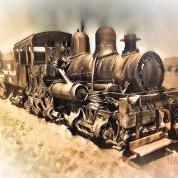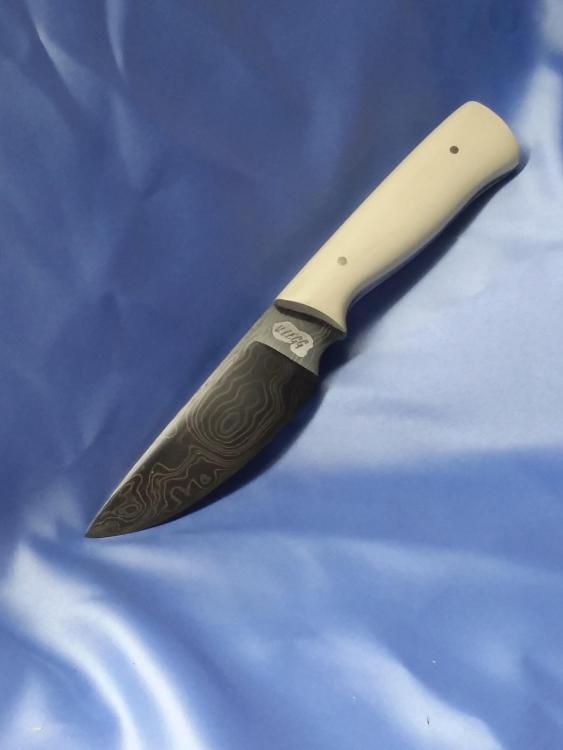
velegski
Members-
Posts
64 -
Joined
-
Last visited
Profile Information
-
Location
Spokane Wa.
-
Interests
Playing with hot metal
Recent Profile Visitors
919 profile views
-
Interesting makers mark. However if your intent is to start selling knives in the future you might consider including your name somewhere on the blade. Without a name I have hunt to find the maker since there are no official makers marks registries. Countless times I've seen someone wanting to buy a knife but they had to ask who made it because all it had was a cool mark on it
-
My knives are soft in the middle
velegski replied to 4g20's topic in Heat Treating Knives, Blades etc
What did grain look like when you broke it. If it mystery steel did you do any tests prior to forging. -
Quenchants and their relative speeds
velegski replied to Glenn's topic in Heat Treating, general discussion
Interesting video on Knife Steel nerds on popular quenchants including canola and their hardening effects on some of the popular carbon steels. -
Bad steel or one commercial heat treat site mentioned that improperly cleaned steel can sometime bake any organic materials into the steel. Another might be oxygen. The foil packet wasn't sealed good and allowed oxygen in, allowing that area to develope scale.
-
I'd try a coupon and see if you get similar results. Then try using the heat treat numbers from other sites and see if there's a change. Using 220f for a tempering cycle should have resulted in 60+ hrc numbers. As to blotch, Steel quality is might come into play. But then test coupons will confirm.
-
What hardness were you shooting for and what are files giving you for reading. Which temp scale you using. F or C. 200? 200F isn't a common temp on tempering charts.
-
Help with a messed up Heat Treat
velegski replied to RobertMorman's topic in Heat Treating Knives, Blades etc
If I'm reading Dr. Larrins book right, grain growth is a combination the steels carbides and heat. The higher the carbide content in given steel, the smaller the grain size. The higher the forging temps the larger the grain size. The time spent at the higher forging temps allows the grain growth to increase. Too high a temperature and we cause carbon and alloy segregation. Resetting the grain size by reheating a steel to its recommended normalizing temp, in this case 1525-1550 degrees F and soaking/holding at that temp allows the alloys and carbides to reset. Soak times for knifes are generally under 5/6 minutes. -
I experiment. I use flat stock and clamp it flat for one tempering cycle. If I still have a slight bend then I use shims at one or both ends.
-
What causes a blade to bend when quenched?
velegski replied to bluerooster's topic in Heat Treating Knives, Blades etc
Try clamping it to a piece of straight 3/16 flat stock. use c clamps and shims to bring blade back into straight and temper for one or two cycles, -
Copper water pipe strips in 2" steel cable non Japanese style
velegski replied to Pigsticker's topic in Metallurgy
1. Unless you know who manufactured the cable is a mystery steel. That means you have to experiment with welding techniques and temperatures. 2. Copper melts at around 1975 degrees F. Which is probably well below your steels welding temp. Meaning it's probably going to be on the forge floor long before you reach the steels welding temp. 3. Pure Nickle powder is best played with while wearing a respirator. Improper handle can't resist in illness and lung damage. 4. Any powdered powder steel requires compression to become a solid. Just dumping it in between strands is a waste. Hammering the cable to set the welds will probably drive most of the powder out with any flux you use. To achieve some contrast people have taken cable down to the large strands and woven nickle or nickel bearing steel wire into the strand and then reassembled the . cable bundle. Those that I've seen weren't impressive. AND as pointed out solid nickel touching Just my 2 cents but what you're trying isn't a beginners task and the end product is often less than impressive. But, good luck! -
Thank you!
-
-
Now that we know you set the steel on an anvil cold enough to freeze water I'm surprised the steel survived the stress of that rapid a cooling change. The hot expanded steel molecules started shrinking back to normal size in nanoseconds of hitting that freezing anvil surface. The side touching the cooler anvil had no choice but to shrink back to size faster than the warm side, hence it warped. Better to clamp the tang in a vise than lay a warm or hot blade on a cooler anvil or steel table.
-
Water versus oil versus commercial quench oils. Age old discussion amongst knife makers. Some advocate water, brine as their standard to good effect. Others use canola or peanut oil. And still others use commercial fast quenches. I use parks 50 to good effect however the warpage issue was strange. Steel I bought 1 hear ago didn't warp at quench. A small batch I got a couple months ago warped. Funny thing was someone posted an excerpt from the ASMI heat treaters guide/manual. It recommended water, however for 3/16 and under it recommended oil. Go figure! Boils down to what works best for you and the steels intended use.
-
If the 6 C oil temp is correct, that might be part of the problem. People using Parks 50 recommend warming it to 120-140 degrees F. If you havent tried it, that warp might be fixed by clamping it to a thick bar with shims( like a 3 point straightening jig) and running it through a tempering cycle or two.


